Related Research Articles
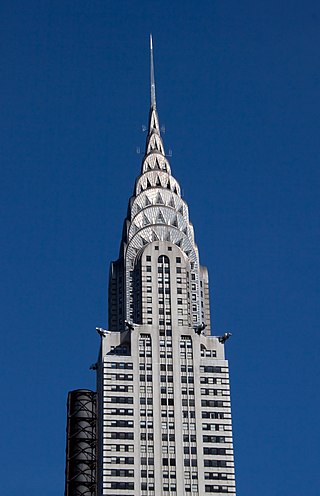
Art Deco, short for the French Arts Décoratifs, and sometimes referred to simply as Deco, is a style of visual arts, architecture, and product design, that first appeared in France in the 1910s, and flourished in the United States and Europe during the 1920s and 1930s. Through styling and design of the exterior and interior of anything from large structures to small objects, including how people look, Art Deco has influenced bridges, buildings, ships, ocean liners, trains, cars, trucks, buses, furniture, and everyday objects like radios and vacuum cleaners.

The Centre Pompidou, more fully the Centre national d'art et de culture Georges-Pompidou, also known as the Pompidou Centre in English, is a complex building in the Beaubourg area of the 4th arrondissement of Paris, near Les Halles, rue Montorgueil, and the Marais. It was designed in the style of high-tech architecture by the architectural team of Richard Rogers, Su Rogers, Renzo Piano, along with Gianfranco Franchini.
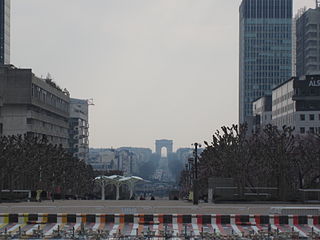
The culture of France has been shaped by geography, by historical events, and by foreign and internal forces and groups. France, and in particular Paris, has played an important role as a center of high culture since the 17th century and from the 19th century on, worldwide. From the late 19th century, France has also played an important role in cinema, fashion, cuisine, literature, technology, the social sciences, and mathematics. The importance of French culture has waxed and waned over the centuries, depending on its economic, political and military importance. French culture today is marked both by great regional and socioeconomic differences and strong unifying tendencies. A global opinion poll for the BBC saw France ranked as the country with the fourth most positive influence in the world in 2014.

French art consists of the visual and plastic arts originating from the geographical area of France. Modern France was the main centre for the European art of the Upper Paleolithic, then left many megalithic monuments, and in the Iron Age many of the most impressive finds of early Celtic art. The Gallo-Roman period left a distinctive provincial style of sculpture, and the region around the modern Franco-German border led the empire in the mass production of finely decorated Ancient Roman pottery, which was exported to Italy and elsewhere on a large scale. With Merovingian art the story of French styles as a distinct and influential element in the wider development of the art of Christian Europe begins.

The Ministry of Culture is the ministry of the Government of France in charge of national museums and the monuments historiques. Its goal is to maintain the French identity through the promotion and protection of the arts on national soil and abroad. Its budget is mainly dedicated to the management of the Archives Nationales and the regional Maisons de la culture.

The Centre for Fine Arts is a multi-purpose cultural venue in Brussels, Belgium. It is often referred to as BOZAR in French or PSK in Dutch. The building was designed by the architect Victor Horta, and completed in 1929 at the instigation of the banker and patron of the arts Henry Le Bœuf. It includes exhibition and conference rooms, a cinema and a concert hall, which serves as home to the National Orchestra of Belgium.
Grapus was a collective of graphic artists working together between 1970 and 1991 that sought to combine excellence in design with a social conscience.

Vietnamese art is visual art that, whether ancient or modern, originated in or is practiced in Vietnam or by Vietnamese artists.
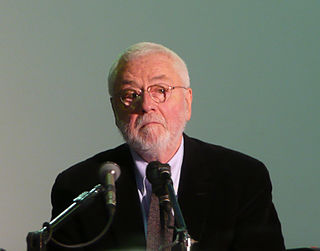
Daniel Roche was a French social and cultural historian, widely recognized as one of the foremost experts of his generation on the cultural history of France during the later years of the Ancien Régime. Roche was elected an International member of the American Philosophical Society in 2009.
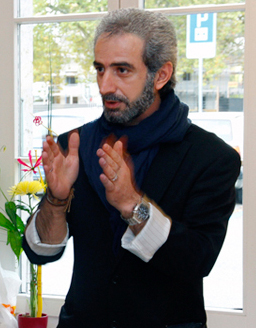
Towhidi Tabari is an Iranian artist.
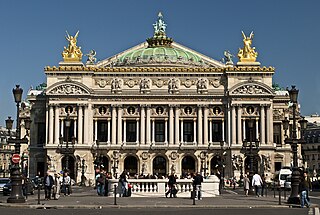
Second Empire style, also known as the Napoleon III style, is a highly eclectic style of architecture and decorative arts, which uses elements of many different historical styles, and also made innovative use of modern materials, such as iron frameworks and glass skylights. It flourished during the reign of Emperor Napoleon III in France (1852–1870) and had an important influence on architecture and decoration in the rest of Europe and North America. Major examples of the style include the Opéra Garnier (1862–1871) in Paris by Charles Garnier, the Bibliothèque nationale de France, the Church of Saint Augustine (1860–1871), and the Philadelphia City Hall (1871–1901). The architectural style was closely connected with Haussmann's renovation of Paris carried out during the Second Empire; the new buildings, such as the Opéra, were intended as the focal points of the new boulevards.

Dominique Moulon is a historian of art and technology, art critic and curator, specializing in French digital art. He is the author of the books Art contemporain nouveaux médias and Art Beyond Digital.

The Stravinsky Fountain is a whimsical public fountain ornamented with sixteen works of sculpture, moving and spraying water, representing the works of composer Igor Stravinsky. It was created in 1983 by sculptors Jean Tinguely and Niki de Saint Phalle, and is located on Place Stravinsky, next to the Centre Pompidou, in Paris.
The culture of Paris concerns the arts, music, museums, festivals and other entertainment in Paris, the capital city of France. The city is today one of the world's leading business and cultural centers; entertainment, music, media, fashion, and the arts all contribute to its status as one of the world's major global cities.
Contemporary African art is commonly understood to be art made by artists in Africa and the African diaspora in the post-independence era. However, there are about as many understandings of contemporary African art as there are curators, scholars and artists working in that field. All three terms of this "wide-reaching non-category [sic]" are problematic in themselves: What exactly is "contemporary", what makes art "African", and when are we talking about art and not any other kind of creative expression?
Stéphane Laurent is a French historian born in Rueil-Malmaison, near Paris, France, in 1966. He is professor of art history at the Université Paris-1 Panthéon-Sorbonne since 1999, where he directs the specialty in Art and Industry. He also taught at the University of Paris IV-Sorbonne, at the University of Berkeley and in universities of the Middle East.

Yorgo Tloupas is an awarded French graphic designer and creative director, specialised in logos, typeface design and magazine art direction.

Between 1900 and 1913, Hector Guimard was responsible for the first generation of entrances to the underground stations of the Paris Métro. His Art Nouveau designs in cast iron and glass dating mostly to 1900, and the associated lettering that he also designed, created what became known as the Métro style and popularized Art Nouveau. However, arbiters of style were scandalized and the public was also less enamored of his more elaborate entrances. In 1904 his design for the Opéra station at Place de l'Opéra was rejected and his association with the Métro ended; many of his station entrances have been demolished, including all three of the pavilion type. Those that remain are now all protected historical monuments, one has been reconstituted, and some originals and replicas also survive outside France.

Jewelleryof the Berber cultures is a historical style of traditional jewellery that was worn by women mainly in rural areas of the Maghreb region in North Africa and inhabited by indigenous Berber people. Following long social and cultural traditions, Berber or other silversmiths in Morocco, Algeria and neighbouring countries created intricate jewellery with distinct regional variations. In many towns and cities, there were Jewish silversmiths, who produced both jewellery in specific Berber styles as well as in other styles, adapting to changing techniques and artistic innovations.
References
- 1 2 Profile: les graphiquants
- 1 2 Ligature.ch (french)
- ↑ Culture Identities, Gestalten publishing, p.93 ISBN 978-3-89955-474-8